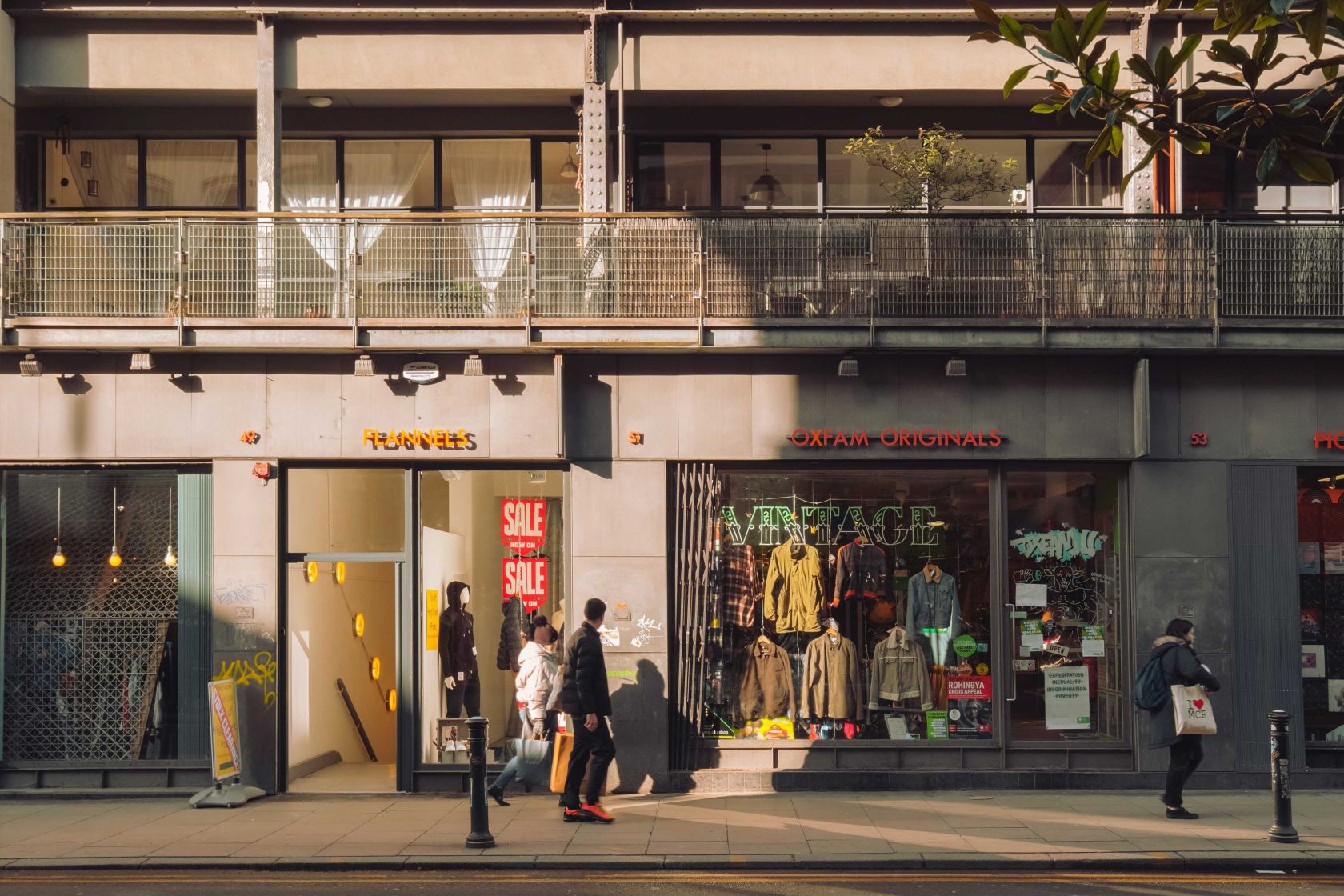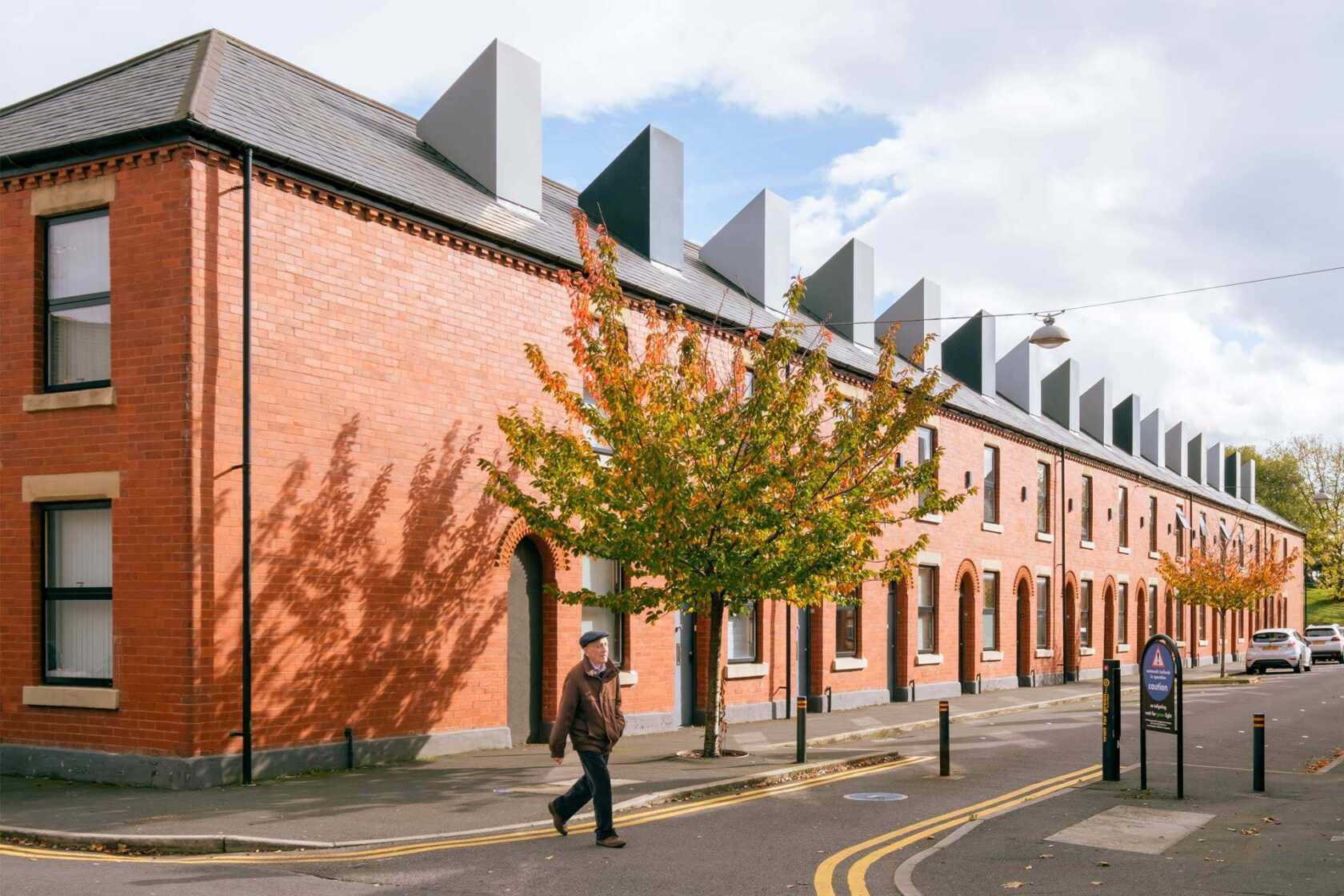Transforming the derelict into the desirable
Jo Smit, is a renowned journalist specialising in the built environment, writing for trade titles such as RIBA Journal.
We recently invited Jo to give her views on the history of Urban Splash, reflecting on three decades of true regeneration, of adding value and – as Jo says – “converting the buildings that others spurred – transforming the derelict into the desirable”.
“We never want to be the first in anything we do,” said a representative of one of the nation’s top housebuilders, as he showed me round his company’s latest development. Instead of innovating, the firm had reduced the creation of places where people would build and live out their lives to a formula, a set of design and construction processes and practices that could be pretty much repeated in any and every location around the UK. Its shareholders have been delighted; the buyers have found themselves living in homes commonly derided as ‘boxes’, often with little or no amenities or vibrancy.
There has long been an alternative way of developing and living. Since the late 1950s, creatives like the US artist Donald Judd had been drawn to the old industrial buildings of New York City’s SoHo and elsewhere.

These buildings may have fallen into disuse but they were robust, ripe for creative conversion and had the two characteristics that artists needed in studios and homeseekers have coveted ever since: space and natural daylight. More than that, they were an intrinsic part of the urban fabric, a familiar face in the neighbourhood, and with the arrival of new residents, cafes and bars, they could start to send the ripples of regeneration further and wider.
Urban Splash followed that alternative course, picking up forgotten but often valuable buildings that were in the direst straits and overcoming all the odds against revival. It converted the buildings that others spurned, transformed the derelict into the desirable and worked with creative, young businesses in architecture and other disciplines.
Think of Smithfield Building in Manchester, Bristol’s Lakeshore or the grand Royal William Yard in Plymouth. All were local landmarks that expressed the prosperity and industry of their cities and were woven into the daily lives of their communities, as a department store, business headquarters and Royal Navy victualling yard respectively. By the late twentieth century all had found themselves out of time and struggling to find new investment and purpose.

Renewed relevance has come not only from residential and other new uses but also from good design, distinctiveness of the commercial mix and activation of place. At a time when mainstream developers were filling ground floor commercial spaces with big brands like Starbucks or Tesco, Urban Splash was signing up independent record stores, bars and cafes at Smithfield Building. While developers of big city office-led schemes were creating exclusive corporate enclaves, Urban Splash was promoting a more messy and inclusive form of urbanism. It created a vibe that attracted people.
Every development has its own distinctive sense of place. Lakeshore’s green and suburban site lent itself to a residential conversion promoting a more sustainable way of living, including such features as nature trails and allotments. Royal William Yard’s scale and stature made it ripe for both residential and commercial uses, and it has been enlivened by pop-up arts performances, craft and food markets and community activities.
Since schemes like these took shape, the UK has seen accelerated shifts to online working and shopping, driven by technological change and the pandemic.

Developers and local authorities have learned they can no longer rely on big-name retailers and corporates to occupy urban schemes and provide footfall in high streets and town and city centres. The kind of mix of local and independent businesses that occupied Smithfield Building is now being advocated as a potential future survival strategy for these locations.
Activation of places with events – now called curation – has also become a more mainstream activity for major developers and landlords, as are the principles of social value, to ensure that local communities derive benefits from development.
At the same time, conversion and refurbishment of existing buildings – now termed adaptive reuse – are today considered essential in limiting the environmental impacts of construction and buildings. Principles of circular economy and whole life carbon are being applied to decisions around whether to rebuild or refurbish, leading many to conclude, as American Institute of Architects former president Carl Elefante so famously said in 2007, that “the greenest building…is the one that is already built”.

Homes of all types and ages are being retrofitted, following in the footsteps of innovative projects like Chimney Pot Park, in Salford, where Victorian terraces were brought up to date by turning their layout upside down to create an open plan first-floor living space with terrace garden.
Doing things as differently as this is not always plain sailing. The UK housebuilding industry has long been exhorted to swap its traditional building methods for more modern, factory-based methods of production, to help resolve its labour and skills shortages. Modernise or Die was the blunt title, and clarion call, of a report produced by Mark Farmer, CEO of construction consultancy Cast, for the government in 2016 on the issue.

In offsite production, Urban Splash saw an opportunity to fill a gap in the new build housing market, between the UK’s mass-market homes and the highly-bespoke, architect-designed one-offs commissioned by individuals. It produced modular homes that were standardised in production but anything but in design, with buyers given the chance to match their home layout to their way of living. At New Islington in Manchester, that freedom allowed buyers to customize homes by adding or removing walls prior to manufacture to give more traditional or open plan layouts. But the company, like others in the sector, was unable to realise its ambition, being thwarted by the UK’s volatile housing market, which failed to give the certainty of demand needed for factory production, and the sheer scale of transformation needed.

Still, the UK construction industry faces a fundamental need to change; it must either build differently or grow its workforce to meet future market demand, with the Construction Industry Training Board estimating that an additional 225,000 workers will be needed by 2027. And there are many other challenges for our built environment, including regenerating a new generation of disused shopping centres and other buildings, restoring pride and activity to left-behind neighbourhoods now suffering further through a cost-of-living crisis, and addressing the climate crisis in earnest.
Continuing to apply the housebuilding practices and processes of the past won’t help answer these questions; the need for innovation couldn’t be greater. Urban Splash has repeatedly been told “It will never work” over its history; that’s why it chose the phrase as the title for its book celebrating 25 years in business. After 30 years, the company can say that most of the time, it has.
Urban Splash Newsplash
Want to be kept in the loop about all things Urban Splash? Then sign up for Newsplash!
Our monthly news round-up with the latest and freshest news on property development, place-making, housing, architecture, events and careers sent straight to your inbox.


